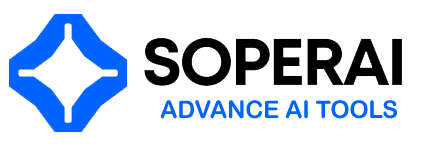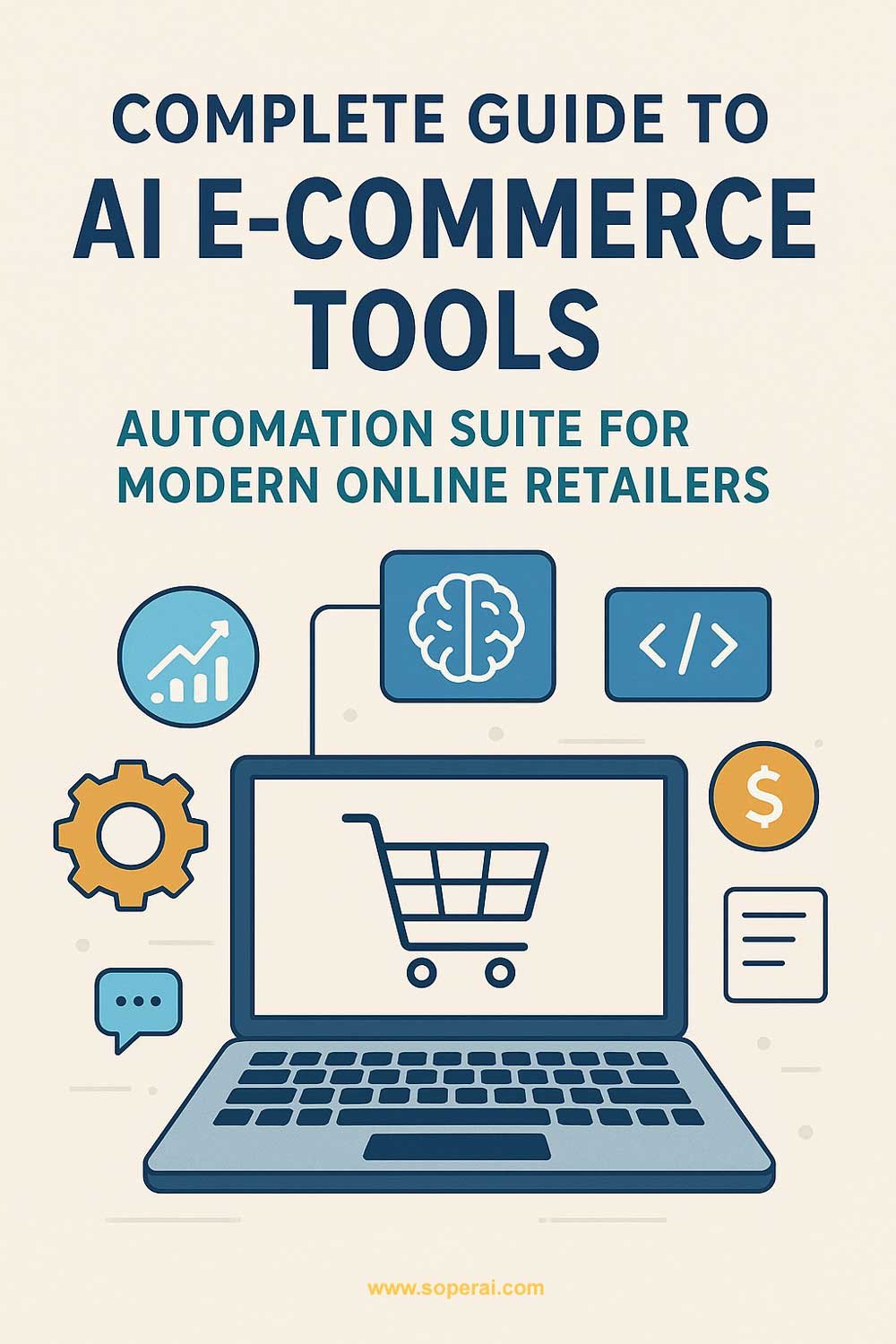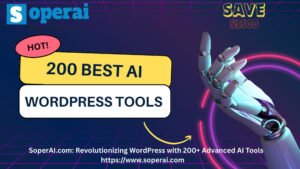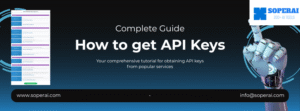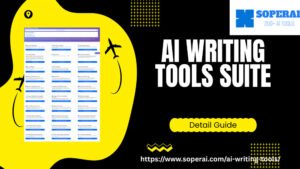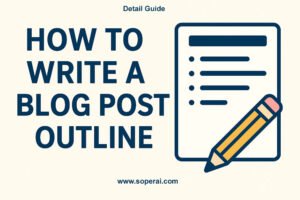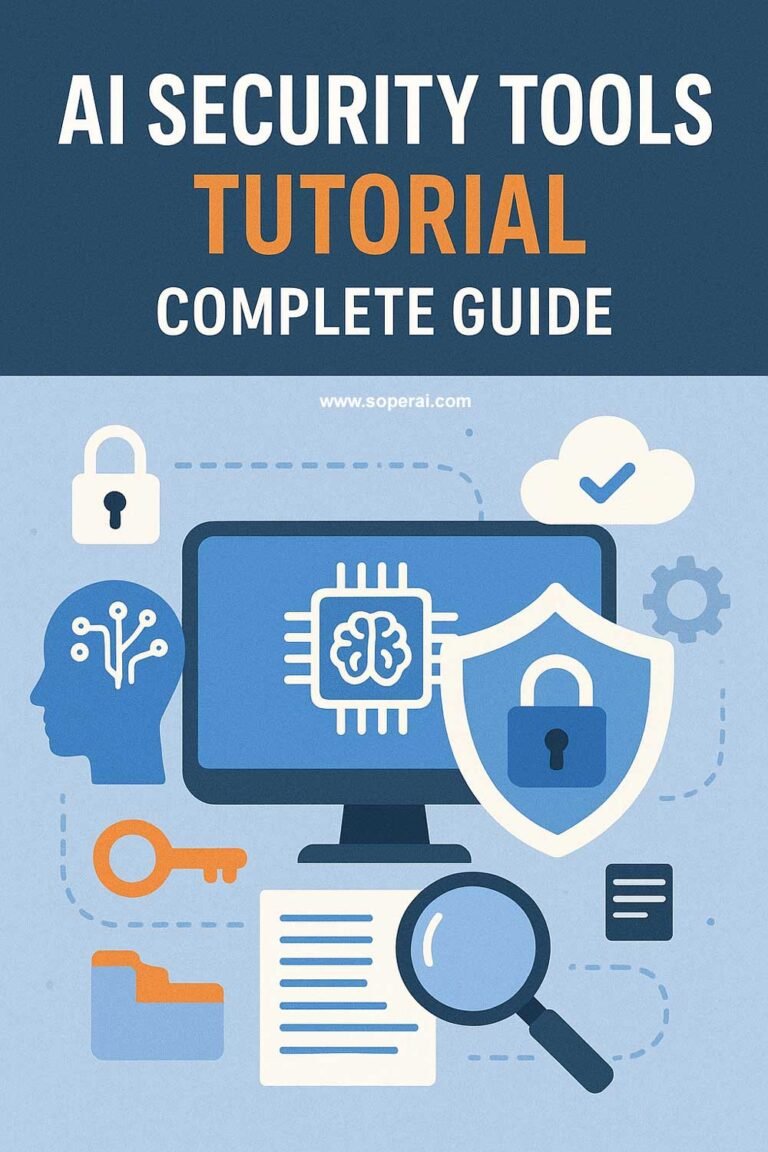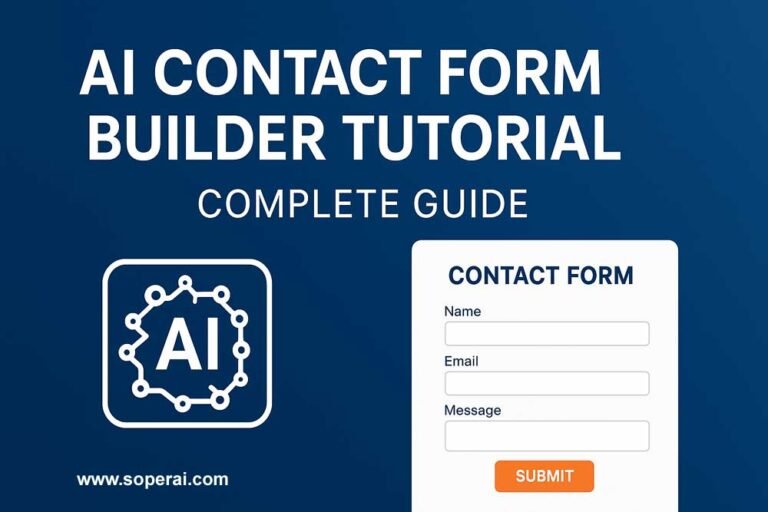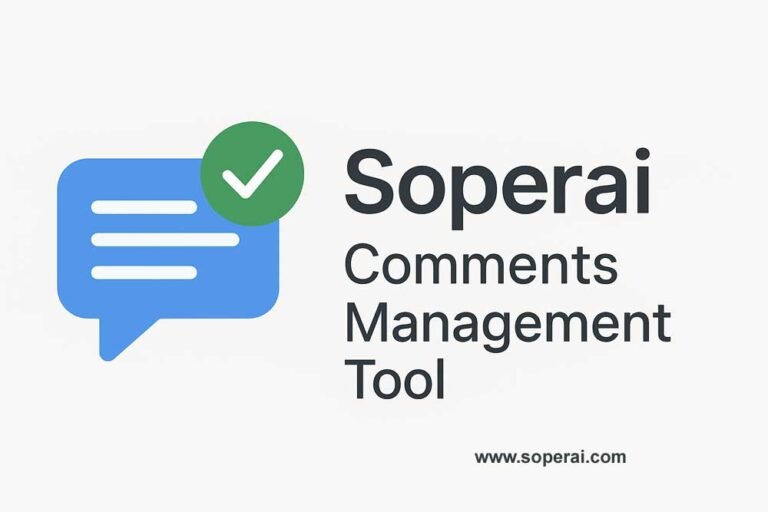Table of Contents
- Introduction to AI E-Commerce Automation
- Understanding the AI E-Commerce Suite
- Product Management Tools
- Image and Visual Content Tools
- Customer Service and Engagement Tools
- Marketing and Advertising Tools
- Implementation Guide
- API Integration Services
- Best Practices and Optimization
- Troubleshooting and Support
Introduction to AI E-Commerce Automation {#introduction}
The AI E-Commerce Automation Suite represents a revolutionary approach to online retail management, combining cutting-edge artificial intelligence with practical business applications. This comprehensive toolkit is specifically designed for modern e-commerce platforms, particularly WooCommerce, to help online retailers scale efficiently while maintaining exceptional quality standards.
What is AI E-Commerce Automation?
AI E-Commerce automation leverages machine learning algorithms and natural language processing to eliminate time-consuming manual tasks that traditionally burden online retailers. These intelligent systems can generate product descriptions, create professional imagery, manage customer communications, and optimize marketing content—all while improving conversion rates and reducing operational costs.
Who Benefits from AI E-Commerce Tools?
Growing Online Retailers
- Scale product catalogs efficiently
- Maintain consistent quality across all listings
- Reduce time-to-market for new products
- Improve search engine optimization
Dropshipping Entrepreneurs
- Generate unique content for supplier products
- Create professional product presentations
- Manage multiple product lines simultaneously
- Automate customer service responses
Digital Marketing Professionals
- Create high-converting ad copy at scale
- Generate social media content consistently
- Analyze customer feedback effectively
- Optimize product presentations
Established E-Commerce Businesses
- Streamline existing operations
- Improve conversion rates across channels
- Enhance customer service capabilities
- Scale marketing efforts efficiently
Key Business Benefits
- Time Savings: Automate hours of manual work in minutes
- Quality Consistency: Maintain professional standards across all content
- Cost Reduction: Eliminate need for extensive content creation teams
- Improved Conversions: Data-driven optimization for better sales results
- Scalability: Handle growing product catalogs without proportional resource increases
Understanding the AI E-Commerce Suite {#suite-overview}
Core Technology Components
Machine Learning Algorithms
- Natural Language Processing for content generation
- Computer vision for image analysis and optimization
- Predictive analytics for customer behavior insights
- Pattern recognition for optimization recommendations
Integration Capabilities
- Seamless WooCommerce integration
- Multi-platform compatibility
- API connectivity with major e-commerce platforms
- Social media platform integration
Automation Features
- Bulk processing capabilities
- Scheduled content generation
- Real-time optimization
- Performance monitoring and reporting
Platform Architecture
The AI E-Commerce Suite is built on a modular architecture that allows businesses to use individual tools or implement the complete solution. Each module is designed to work independently while providing enhanced functionality when used together.
Core Modules
- Product Management System
- Visual Content Creation Engine
- Customer Service Automation
- Marketing Content Generator
- Performance Analytics Dashboard
Product Management Tools {#product-management}
WooCommerce Product Generator
The WooCommerce Product Generator is the cornerstone tool for automating product catalog creation and management.
Features and Capabilities
Automated Product Creation
- Generate complete WooCommerce product listings in seconds
- Create SEO-optimized product descriptions
- Generate technical specifications automatically
- Include compelling bullet points and features lists
Content Optimization
- Analyze competitor products for optimization opportunities
- Incorporate relevant keywords for search engine visibility
- Create unique content to avoid duplicate content penalties
- Generate multiple variations for A/B testing
Step-by-Step Usage Guide
Step 1: Product Information Input
- Access the WooCommerce Product Generator tool
- Enter basic product information (name, category, key features)
- Upload product images or provide image URLs
- Specify target keywords and market positioning
Step 2: AI Analysis and Generation
- The AI analyzes your input and researches similar products
- Generates multiple description variations
- Creates SEO-optimized titles and meta descriptions
- Produces technical specifications and feature lists
Step 3: Review and Customization
- Review all generated content elements
- Make adjustments to match your brand voice
- Select preferred variations
- Customize for specific market requirements
Step 4: Export and Implementation
- Export content in WooCommerce-compatible format
- Bulk import to your WooCommerce store
- Set up automated product updates
- Monitor performance and optimize as needed
Product Title Generator
Creating compelling, SEO-optimized product titles is crucial for discoverability and conversion rates.
Key Features
SEO Optimization
- Incorporate high-value keywords naturally
- Optimize title length for different platforms
- Include compelling power words and descriptors
- Follow platform-specific best practices
Conversion Focus
- Highlight key benefits and features
- Create urgency and appeal
- Include relevant specifications when beneficial
- Test multiple variations for optimal performance
Implementation Process
Setup and Configuration
- Define your product categories and target keywords
- Set brand guidelines and naming conventions
- Configure platform-specific requirements
- Establish testing and optimization protocols
Title Generation Workflow
- Input basic product information
- Specify target platforms (Amazon, Google Shopping, etc.)
- Select primary keywords and features to highlight
- Generate and review multiple title options
- Implement A/B testing to identify top performers
FAQs Generator
Comprehensive FAQ sections improve customer confidence and reduce support ticket volume.
Automated FAQ Creation
Research and Analysis
- Analyze competitor FAQ sections
- Identify common customer questions and concerns
- Research industry-specific inquiries
- Consider product-specific technical questions
Content Generation
- Create clear, concise question formulations
- Generate comprehensive, helpful answers
- Include relevant product specifications
- Add troubleshooting information when applicable
Best Practices for FAQ Implementation
Organization and Structure
- Group questions by category (shipping, returns, technical)
- Use clear, searchable headings
- Implement expandable/collapsible sections
- Include internal linking to relevant product pages
Optimization Strategies
- Regular updates based on new customer inquiries
- A/B testing of answer formats and lengths
- Integration with customer service systems
- Performance tracking and continuous improvement
Review Response Generator
Professional review responses are essential for reputation management and customer engagement.
Automated Response Features
Personalization Capabilities
- Address customers by name when available
- Reference specific aspects of their review
- Customize responses based on review sentiment
- Include relevant product information and suggestions
Brand Voice Consistency
- Maintain consistent tone across all responses
- Align with brand personality and values
- Use appropriate language for target audience
- Include standard brand messaging when relevant
Response Strategy Framework
Positive Review Responses
- Express genuine gratitude for the feedback
- Highlight specific aspects they mentioned
- Encourage them to explore other products
- Invite them to share their experience on social media
Negative Review Responses
- Acknowledge their concerns professionally
- Offer specific solutions or next steps
- Provide contact information for follow-up
- Demonstrate commitment to customer satisfaction
Neutral Review Responses
- Thank them for taking time to review
- Offer additional product information or tips
- Invite them to reach out with questions
- Suggest complementary products they might enjoy
Product Review Analyzer
Transform customer feedback into actionable business insights with automated review analysis.
Analysis Capabilities
Sentiment Analysis
- Categorize reviews by sentiment (positive, negative, neutral)
- Identify emotional indicators and intensity
- Track sentiment trends over time
- Compare sentiment across different products
Key Insight Extraction
- Identify frequently mentioned features and benefits
- Highlight common complaints and concerns
- Extract suggestions for product improvements
- Discover unexpected use cases and applications
Implementation and Usage
Data Collection Setup
- Connect to review sources (Amazon, Google, your website)
- Configure automated data collection schedules
- Set up filtering and categorization rules
- Establish alert systems for significant changes
Analysis and Reporting
- Generate comprehensive review summaries
- Create actionable insight reports
- Identify trends and patterns
- Develop improvement recommendations
Action Planning
- Prioritize issues based on frequency and impact
- Develop response strategies for common concerns
- Plan product improvements based on feedback
- Create content to address frequently asked questions
Image and Visual Content Tools {#visual-content}
Smart Image Search & Fetch
Professional product imagery is essential for e-commerce success, but sourcing and managing images can be time-consuming.
Intelligent Search Capabilities
Advanced Search Algorithms
- Natural language image search queries
- Visual similarity matching
- Category and style-based filtering
- Quality and resolution optimization
Automated Processing
- Bulk image downloading and organization
- Automatic resizing for different platforms
- Format conversion and optimization
- Metadata extraction and tagging
Usage Workflow
Search and Selection Process
- Define image requirements and specifications
- Input search queries using natural language
- Review AI-curated image suggestions
- Select images that match your brand aesthetic
Processing and Optimization
- Automatic download and organization
- Resize images for different use cases
- Optimize file sizes for web performance
- Generate multiple format variations
Integration and Management
- Organize images in categorized folders
- Tag images with relevant keywords
- Create image libraries for future use
- Set up automated backup and sync
Image Caption Generator
Engaging image captions improve accessibility, SEO performance, and social media engagement.
Caption Creation Features
SEO-Optimized Captions
- Incorporate relevant keywords naturally
- Describe image content for accessibility
- Include calls-to-action when appropriate
- Optimize length for different platforms
Brand Voice Integration
- Maintain consistent tone across all captions
- Reflect brand personality and values
- Use appropriate language for target audience
- Include brand-specific terminology and messaging
Platform-Specific Optimization
Social Media Captions
- Instagram: Visual storytelling with hashtag optimization
- Facebook: Engagement-focused with conversation starters
- Twitter: Concise with trending hashtag integration
- LinkedIn: Professional tone with industry insights
E-Commerce Platform Captions
- Product detail pages: Feature and benefit focused
- Category pages: Descriptive and search-optimized
- Blog posts: Informative with storytelling elements
- Email marketing: Action-oriented with clear CTAs
Image Description Generator
Detailed image descriptions enhance search visibility and user experience across all platforms.
Description Types and Applications
SEO-Focused Descriptions
- Alt text for web accessibility compliance
- Image file name optimization
- Meta descriptions for image search
- Schema markup for rich snippets
Marketing-Focused Descriptions
- Product catalog descriptions
- Social media post descriptions
- Email marketing image descriptions
- Advertisement visual descriptions
Best Practices Implementation
Technical Optimization
- Proper keyword density and placement
- Appropriate length for different contexts
- Structured data implementation
- Cross-platform compatibility
User Experience Enhancement
- Clear, descriptive language
- Relevant context and background information
- Compelling calls-to-action
- Accessibility-focused descriptions
AI Background Removal
Professional product photography often requires clean, consistent backgrounds for optimal presentation.
Automated Processing Features
Intelligent Object Detection
- Accurately identify product boundaries
- Preserve fine details like hair, fur, or transparent materials
- Handle complex backgrounds and lighting conditions
- Process multiple objects in single images
Quality Assurance
- Edge refinement for smooth, natural appearance
- Color correction and enhancement
- Shadow and lighting adjustments
- Batch processing with consistent results
Implementation Strategies
Product Photography Workflow
- Upload original product images
- Automated background removal processing
- Quality review and manual adjustments if needed
- Export in multiple formats and sizes
Brand Consistency Applications
- Standardize product catalog appearance
- Create cohesive social media imagery
- Prepare images for marketplace listings
- Develop promotional material templates
Infographic & Banner Creator
Visual marketing materials are essential for capturing attention and communicating value propositions effectively.
Design Capabilities
AI-Powered Layout Generation
- Automatically arrange content elements optimally
- Balance text and visual components
- Create professional design hierarchies
- Ensure brand guideline compliance
Template and Customization Options
- Industry-specific template library
- Custom brand template creation
- Drag-and-drop editing interface
- Real-time preview and optimization
Content Types and Applications
Product Infographics
- Feature comparison charts
- Specification and benefit summaries
- How-to guides and instructions
- Before/after demonstrations
Promotional Banners
- Sale and discount announcements
- New product launch materials
- Seasonal promotional graphics
- Social media campaign assets
Design Best Practices
Visual Hierarchy and Composition
- Clear focal points and flow
- Appropriate use of white space
- Consistent typography and styling
- Platform-appropriate dimensions
Brand Integration
- Consistent color palette usage
- Logo placement and sizing
- Brand voice in messaging
- Style guide adherence
Customer Service and Engagement Tools {#customer-service}
AI Customer Support Chat
24/7 intelligent customer support significantly improves customer satisfaction while reducing operational costs.
Chatbot Capabilities
Natural Language Processing
- Understand customer inquiries in natural language
- Provide relevant, contextual responses
- Handle multiple languages and dialects
- Learn from interactions to improve responses
Integration Features
- Seamless handoff to human agents when needed
- Access to product catalogs and inventory systems
- Integration with CRM and order management systems
- Real-time data access for personalized responses
Implementation Strategy
Setup and Configuration
- Define common customer inquiry categories
- Create comprehensive knowledge base
- Set up escalation rules and procedures
- Configure integration with existing systems
Training and Optimization
- Input historical customer service data
- Define brand voice and response guidelines
- Set up continuous learning protocols
- Establish performance monitoring systems
Deployment and Management
- Gradual rollout with monitoring
- Regular performance analysis and optimization
- Continuous training data updates
- User feedback collection and implementation
Performance Optimization
Key Metrics to Monitor
- Response time and accuracy
- Customer satisfaction scores
- Resolution rate without human intervention
- Conversion rate from chat interactions
Continuous Improvement Process
- Regular analysis of chat transcripts
- Identification of knowledge gaps
- Updates to response templates and workflows
- A/B testing of different response approaches
Product Showcase Creator
Dynamic product presentations significantly improve engagement and conversion rates.
Interactive Features
Multi-Angle Product Views
- 360-degree product rotation
- Zoom functionality for detail examination
- Multiple image galleries and slideshows
- Video integration and autoplay options
Feature Highlighting
- Interactive hotspots with detailed information
- Before/after comparison sliders
- Size and color variation displays
- Related product suggestions
Creation Process
Content Preparation
- Gather high-quality product images from multiple angles
- Prepare detailed feature descriptions and specifications
- Create or source product demonstration videos
- Organize content in logical presentation sequence
Showcase Development
- Select appropriate template and layout
- Upload and organize visual content
- Configure interactive elements and hotspots
- Set up mobile-responsive display options
Testing and Optimization
- Test functionality across different devices and browsers
- Monitor user engagement and interaction patterns
- A/B test different layouts and presentation styles
- Optimize loading times and performance
Marketing and Advertising Tools {#marketing-tools}
High-Converting Ad Copy Generator
Effective advertising copy is crucial for maximizing return on ad spend across all digital marketing channels.
Platform-Specific Optimization
Google Ads Copy Generation
- Headline optimization for search intent
- Description lines that highlight unique value propositions
- Extension copy for additional information
- Keyword integration for quality score improvement
Facebook and Social Media Ad Copy
- Engaging, conversation-starting headlines
- Visual storytelling that complements imagery
- Clear calls-to-action that drive conversions
- Audience-specific messaging and tone
Display and Banner Ad Copy
- Concise, attention-grabbing messages
- Visual hierarchy considerations
- Brand integration and consistency
- Size-appropriate content variations
Copy Creation Process
Research and Analysis Phase
- Analyze target audience demographics and psychographics
- Research competitor advertising approaches
- Identify unique selling propositions and differentiators
- Define primary conversion goals and success metrics
Content Generation Phase
- Input product information and target audience data
- Generate multiple copy variations for testing
- Customize content for specific platforms and audiences
- Create supporting content for landing pages
Testing and Optimization Phase
- Implement A/B testing protocols
- Monitor performance metrics and conversion rates
- Iterate based on performance data
- Scale successful copy approaches
Social Media Banner Suite
Consistent, professional social media presence requires regular content creation across multiple platforms.
Platform-Specific Design Features
Instagram Optimization
- Square and story format templates
- Visually appealing design elements
- Hashtag integration suggestions
- Instagram Shopping compatibility
Facebook Marketing Materials
- Cover photo and post templates
- Event and promotion graphics
- Carousel ad format optimization
- Video thumbnail and overlay designs
Twitter and LinkedIn Content
- Professional banner designs
- Tweet-optimized graphics
- Company page visual elements
- Industry-specific template options
Content Planning and Creation
Strategic Content Calendar
- Plan content themes and campaigns
- Coordinate across multiple platforms
- Schedule content for optimal engagement times
- Track performance and adjust strategies
Brand Consistency Management
- Maintain visual identity across platforms
- Ensure message consistency and voice
- Create template libraries for efficiency
- Implement approval workflows
AI Image Generator
Custom imagery creation without traditional photography or design costs opens unlimited creative possibilities.
Advanced Generation Capabilities
Text-to-Image Creation
- Natural language image descriptions
- Style and artistic direction specification
- Brand element integration
- Multiple variation generation
Customization and Refinement
- Color scheme adjustments
- Style and filter applications
- Resolution and format optimization
- Batch processing capabilities
Creative Applications
Marketing and Advertising
- Custom advertisement visuals
- Social media content creation
- Blog post and article imagery
- Email marketing graphics
Product and Brand Development
- Concept visualization and mockups
- Packaging and label design inspiration
- Website and digital asset creation
- Presentation and proposal materials
Quality Control and Brand Alignment
Brand Guideline Integration
- Color palette enforcement
- Typography and style consistency
- Logo and brand element inclusion
- Message and tone alignment
Quality Assurance Process
- Multiple generation options for selection
- Human review and approval workflows
- Revision and refinement capabilities
- Final optimization and processing
Implementation Guide {#implementation}
Getting Started with AI E-Commerce Tools
Initial Setup and Configuration
Account Setup and Onboarding
- Create your account and complete business profile
- Connect your e-commerce platform (WooCommerce, Shopify, etc.)
- Configure brand guidelines and preferences
- Set up team access and permission levels
Platform Integration
- Install necessary plugins or extensions
- Configure API connections and data synchronization
- Set up automated workflows and processes
- Test integrations and verify functionality
Tool Selection and Prioritization
- Assess your current business needs and pain points
- Prioritize tools based on potential impact and ROI
- Plan implementation timeline and resource allocation
- Set up success metrics and tracking systems
Step-by-Step Implementation Process
Phase 1: Foundation Setup (Weeks 1-2)
- Complete platform integration and testing
- Configure basic automation workflows
- Train team members on tool usage
- Establish content creation and approval processes
Phase 2: Core Tool Deployment (Weeks 3-4)
- Implement product management tools
- Set up customer service automation
- Begin content generation and optimization
- Launch basic marketing automation
Phase 3: Advanced Features and Optimization (Weeks 5-8)
- Deploy advanced marketing tools
- Implement comprehensive analytics and reporting
- Optimize workflows based on initial performance data
- Scale successful processes across all product lines
Phase 4: Full Integration and Scaling (Ongoing)
- Achieve full platform integration
- Implement advanced automation workflows
- Continuous optimization based on performance data
- Expand tool usage to new product categories and markets
Training and Team Development
Staff Training Programs
Basic Tool Usage Training
- Overview of available tools and capabilities
- Step-by-step usage instructions for each tool
- Best practices and common pitfalls to avoid
- Hands-on practice with sample projects
Advanced Features and Optimization
- Advanced configuration and customization options
- Integration with existing business processes
- Performance analysis and optimization techniques
- Troubleshooting and problem-solving skills
Ongoing Education and Updates
- Regular training updates for new features
- Industry best practices and trend analysis
- Peer learning and knowledge sharing sessions
- External training and certification opportunities
Change Management
Process Documentation
- Standard operating procedures for each tool
- Workflow diagrams and process maps
- Quality control checklists and guidelines
- Emergency procedures and troubleshooting guides
Performance Monitoring
- Key performance indicator tracking
- Regular performance reviews and feedback
- Goal setting and achievement recognition
- Continuous improvement initiatives
API Integration Services {#api-integration}
Professional API Integration Overview
For businesses requiring advanced functionality and seamless integration with existing systems, professional API integration services provide comprehensive solutions that eliminate technical barriers and ensure optimal performance.
What APIs Can Enhance Your E-Commerce Operations?
E-Commerce Platform APIs
- WooCommerce REST API for complete store management
- Shopify API for multi-platform synchronization
- Amazon Marketplace API for seller account management
- eBay API for listing and inventory management
Payment and Financial APIs
- Stripe API for payment processing and subscription management
- PayPal API for global payment acceptance
- Square API for in-person and online transactions
- Klarna API for buy-now-pay-later options
Shipping and Logistics APIs
- UPS, FedEx, and USPS APIs for shipping rate calculation
- ShipStation API for order fulfillment automation
- Printful API for print-on-demand integration
- Inventory management system APIs
Marketing and Analytics APIs
- Google Analytics API for comprehensive data tracking
- Facebook Marketing API for advertising campaign management
- Mailchimp API for email marketing automation
- Zendesk API for customer support integration
Integration Process and Timeline
Phase 1: Consultation and Planning (Week 1)
Requirements Assessment
- Detailed analysis of your business needs and goals
- Technical architecture review and compatibility assessment
- API selection and prioritization based on business impact
- Timeline and resource requirement planning
Technical Planning
- API documentation review and analysis
- Integration architecture design and planning
- Security and compliance requirement identification
- Testing and quality assurance planning
Phase 2: API Registration and Setup (Week 2)
Professional Registration Services
- Account creation using your business credentials
- API key and authentication credential setup
- Security configuration and access control implementation
- Compliance and terms of service agreement
Development Environment Setup
- Sandbox and testing environment configuration
- Development tools and framework setup
- Initial connection testing and verification
- Documentation and credential management system setup
Phase 3: Integration Development (Weeks 3-4)
Custom Code Development
- API endpoint integration and configuration
- Data mapping and transformation logic implementation
- Error handling and exception management
- Performance optimization and efficiency improvements
Testing and Quality Assurance
- Comprehensive functionality testing across all integration points
- Performance and load testing under various conditions
- Security testing and vulnerability assessment
- User acceptance testing and workflow validation
Phase 4: Deployment and Optimization (Week 5)
Production Deployment
- Live environment configuration and deployment
- Monitoring and alerting system implementation
- Performance baseline establishment
- Documentation and handover completion
Post-Deployment Support
- Performance monitoring and optimization
- Issue resolution and troubleshooting support
- Regular maintenance and update services
- Ongoing consultation and improvement recommendations
Investment and Pricing Structure
Professional Integration Fee Structure
One-Time Integration Fee: $50
- Complete technical implementation and setup
- Professional API registration and configuration
- Comprehensive testing and quality assurance
- Documentation and knowledge transfer
- 30-day post-deployment support
API Usage Costs (Paid Directly to Providers)
Free Tier Opportunities
- Many APIs offer generous free usage tiers for testing and small-scale operations
- Free trials available for most premium services
- Educational and startup discounts often available
- Gradual scaling options as your business grows
Typical Pricing Models
- Usage-based pricing (per API call or transaction)
- Monthly or annual subscription fees
- Tiered pricing based on volume and features
- Enterprise-level custom pricing for large operations
Payment Requirements
Setup Requirements
- Valid credit or debit card for API provider accounts
- Business verification documents may be required
- Tax identification and business registration information
- Billing address and contact information
Getting Professional Integration Support
Contact Methods and Consultation Options
Immediate Consultation Services
- Phone consultation for urgent integration needs
- Live chat support for quick questions and clarification
- Email consultation for detailed requirement analysis
- Video conference meetings for complex project discussion
Project Planning and Quotes
- Online form submission for comprehensive project quotes
- Detailed requirement gathering and analysis
- Custom integration proposals and timeline development
- Ongoing project management and communication
Support and Maintenance Services
Ongoing Support Options
- Regular performance monitoring and optimization
- Proactive issue identification and resolution
- API updates and compatibility maintenance
- Business growth planning and scaling consultation
Training and Documentation
- Comprehensive user training and onboarding
- Technical documentation and process guides
- Video tutorials and training materials
- Ongoing support and consultation services
Best Practices and Optimization {#best-practices}
Content Creation Best Practices
Product Description Optimization
SEO-Focused Writing Techniques
- Research and incorporate relevant keywords naturally throughout content
- Use semantic keyword variations to capture related search terms
- Optimize content length for both user engagement and search rankings
- Include structured data markup for enhanced search visibility
Conversion-Focused Content Structure
- Lead with compelling headlines that highlight primary benefits
- Use bullet points and formatting to improve readability and scanning
- Include social proof elements like reviews and testimonials
- End with clear, compelling calls-to-action that drive desired behaviors
Brand Voice Consistency
- Develop and maintain consistent tone and personality across all content
- Create style guides and templates to ensure consistency at scale
- Train team members on brand voice guidelines and best practices
- Regularly audit content to ensure continued brand alignment
Visual Content Optimization
Image Quality and Technical Standards
- Use high-resolution images optimized for web performance
- Implement consistent lighting, angles, and styling across product catalogs
- Ensure color accuracy and consistent white balance
- Optimize file sizes and formats for fast loading times
Accessibility and Inclusion
- Include descriptive alt text for all images
- Ensure sufficient color contrast for visually impaired users
- Use clear, readable fonts and appropriate sizing
- Test content with accessibility tools and user feedback
Performance Monitoring and Analytics
Key Performance Indicators (KPIs)
E-Commerce Specific Metrics
- Conversion rate improvement across product categories
- Average order value and customer lifetime value increases
- Shopping cart abandonment rate reduction
- Product page engagement and time-on-page improvements
Content Performance Metrics
- Organic search traffic growth and keyword ranking improvements
- Social media engagement rates and sharing frequency
- Email marketing open and click-through rates
- Customer satisfaction and review sentiment analysis
Operational Efficiency Metrics
- Time savings in content creation and management processes
- Cost reduction per product listing or marketing campaign
- Team productivity improvements and workflow optimization
- Error reduction and quality consistency improvements
Data Analysis and Optimization
Regular Performance Reviews
- Weekly performance data analysis and trend identification
- Monthly comprehensive reporting and strategy adjustment
- Quarterly business impact assessment and goal setting
- Annual tool performance evaluation and upgrade planning
Continuous Improvement Process
- A/B testing of content variations and approaches
- Customer feedback collection and implementation
- Competitor analysis and industry best practice adoption
- Technology updates and feature enhancement integration
Workflow Optimization
Team Collaboration and Efficiency
Role Definition and Responsibilities
- Clear assignment of tool ownership and management responsibilities
- Cross-training to ensure continuity and flexibility
- Collaboration protocols for content creation and approval
- Performance accountability and recognition systems
Process Standardization
- Standard operating procedures for each tool and workflow
- Quality control checklists and approval processes
- Template libraries and brand asset management
- Version control and content management systems
Automation and Scaling
Intelligent Automation Implementation
- Identify repetitive tasks suitable for full automation
- Set up triggered workflows based on business events and schedules
- Implement quality control systems within automated processes
- Monitor automation performance and adjust parameters as needed
Scaling Strategies
- Plan for increased product catalog and content volume
- Implement systems that grow with your business needs
- Develop processes that maintain quality while increasing speed
- Create training and onboarding systems for team expansion
Troubleshooting and Support {#troubleshooting}
Common Technical Issues and Solutions
Integration and Connectivity Problems
WooCommerce Integration Issues
- Verify API credentials and connection settings
- Check plugin compatibility and update requirements
- Review server requirements and hosting compatibility
- Clear cache and test with minimal plugin configuration
Image Processing Problems
- Verify image format compatibility and file size limitations
- Check internet connection speed and stability
- Clear browser cache and try alternative browsers
- Contact support for server-side processing issues
Content Generation Inconsistencies
- Review input data quality and completeness
- Check for brand guideline configuration accuracy
- Verify language and regional settings
- Provide more detailed input parameters for better results
Performance and Speed Issues
Slow Content Generation
- Check internet connection speed and stability
- Reduce batch size for bulk processing operations
- Clear browser cache and temporary files
- Monitor server status and report persistent issues
Quality Control Problems
- Review and update brand guidelines and preferences
- Provide additional training data and examples
- Use manual review and editing capabilities
- Report specific quality issues to support team for improvement
Customer Support Resources
Self-Service Support Options
Video Tutorials and Documentation
- Comprehensive video library covering all tools and features
- Step-by-step written guides and best practice documentation
- FAQ sections addressing common questions and issues
- Community forums for peer support and knowledge sharing
Learning Resources
- Industry best practice guides and case studies
- Webinar series covering advanced features and optimization
- Template libraries and example content for reference
- Regular newsletter with tips, updates, and success stories
Direct Support Channels
Immediate Assistance
- Live chat support for urgent technical issues
- Phone support for complex problem resolution
- Email support for detailed questions and consultation
- Screen sharing support for hands-on troubleshooting
Professional Consultation Services
- Business strategy consultation for tool optimization
- Custom training sessions for team development
- Performance analysis and improvement recommendations
- Integration planning for complex business requirements
Escalation and Priority Support
Issue Classification and Response Times
- Critical issues: Immediate response for business-stopping problems
- High priority: 24-hour response for significant functionality issues
- Medium priority: 48-hour response for general questions and optimization
- Low priority: Weekly response for feature requests and suggestions
Resolution Process
- Detailed issue documentation and tracking
- Regular status updates and communication
- Resolution verification and follow-up
- Process improvement based on issue patterns and feedback
Continuous Improvement and Updates
Feature Updates and Enhancements
Regular Platform Updates
- Monthly feature releases and improvements
- Quarterly major updates with new capabilities
- Annual platform reviews and major enhancements
- User feedback integration in development planning
Beta Testing Programs
- Early access to new features and tools
- Feedback collection and improvement implementation
- Community involvement in feature development
- Priority support for beta program participants
Training and Skill Development
Ongoing Education Opportunities
- Regular webinars covering new features and best practices
- Industry conference attendance and knowledge sharing
- Certification programs for advanced tool usage
- Peer learning communities and success sharing
Business Growth Support
- Consultation services for scaling and expansion
- Custom development for unique business requirements
- Integration support for new platforms and systems
- Strategic planning assistance for long-term growth
Conclusion
The AI E-Commerce Automation Suite represents a transformative approach to modern online retail management, offering comprehensive solutions that address every aspect of e-commerce operations from product management to customer service and marketing. By leveraging advanced artificial intelligence and machine learning technologies, businesses can achieve unprecedented levels of efficiency, consistency, and scalability while maintaining the quality standards that customers expect.
Key Success Factors
Strategic Implementation Success with AI e-commerce tools requires thoughtful planning and strategic implementation. Begin with the tools that address your most pressing business needs, establish clear processes and quality controls, and gradually expand your usage as you become comfortable with the technology and see positive results.
Team Engagement and Training The most successful implementations involve comprehensive team training and change management. Ensure that all team members understand not just how to use the tools, but why they’re beneficial and how they fit into the broader business strategy. Regular training updates and performance monitoring help maintain high standards and continuous improvement.
Continuous Optimization AI e-commerce tools are most effective when used as part of an ongoing optimization process. Regular performance analysis, A/B testing, and adjustment based on results ensure that you’re maximizing the return on your investment and staying ahead of competition.
Long-Term Business Impact
Competitive Advantage Businesses that successfully implement AI e-commerce automation gain significant competitive advantages through improved efficiency, reduced costs, and enhanced customer experiences. The ability to scale operations without proportionally increasing resources allows for sustainable growth and market expansion.
Future-Proofing Your Business As artificial intelligence continues to evolve and improve, businesses that adopt these technologies early will be better positioned to take advantage of future developments. The skills, processes, and infrastructure you build today will serve as the foundation for even more advanced capabilities as the technology matures.
Return on Investment The combination of time savings, quality improvements, and increased conversion rates typically results in significant return on investment within the first few months of implementation. Many businesses report cost savings that far exceed the initial investment, while simultaneously improving customer satisfaction and business growth.
Getting Started Today
Immediate Action Steps
- Assess Your Current Needs: Identify the areas of your e-commerce operations that consume the most time and resources
- Start Small: Begin with one or two tools that address your most pressing challenges
- Set Clear Goals: Establish measurable objectives for time savings, quality improvements, and business growth
- Plan for Growth: Consider how your needs might evolve and plan for scalable solutions
Professional Support Available Remember that professional API integration services are available for businesses that want to maximize their implementation success. The $50 one-time integration fee provides comprehensive setup, testing, and optimization to ensure you get the maximum benefit from these powerful tools.
Contact Information for Support
- Email consultation for detailed planning and questions
- Live chat for immediate assistance and clarification
- Phone consultation for complex requirements and custom solutions
- Video meetings for comprehensive strategy planning
Final Recommendations
The AI E-Commerce Automation Suite offers unprecedented opportunities for businesses to streamline operations, improve quality, and scale efficiently. The key to success lies in thoughtful implementation, comprehensive team training, and ongoing optimization based on performance data.
Whether you’re a growing startup looking to establish professional operations quickly, an established business seeking to improve efficiency and reduce costs, or an enterprise organization planning for future growth, these AI-powered tools provide the capabilities you need to succeed in today’s competitive e-commerce landscape.
Start with the tools that address your most immediate needs, invest in proper training and setup, and gradually expand your usage as you see results. The combination of powerful technology, professional support, and strategic implementation will transform your e-commerce operations and drive sustainable business growth.
The future of e-commerce is intelligent, automated, and customer-focused. By adopting these AI-powered solutions today, you’re not just solving current challenges—you’re building the foundation for long-term success in an increasingly digital marketplace.
